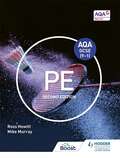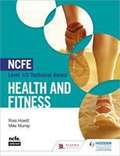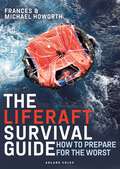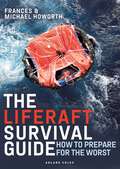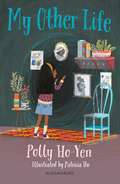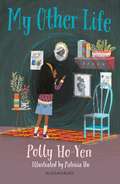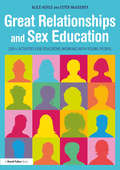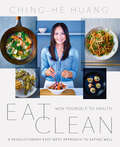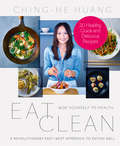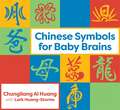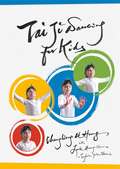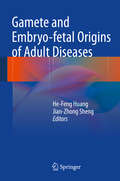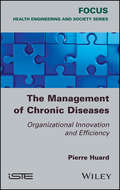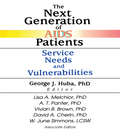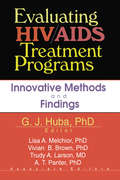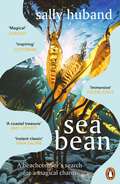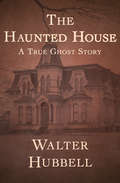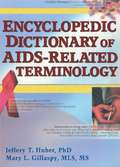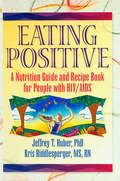- Table View
- List View
AQA GCSE (9-1) PE Second Edition
by Ross Howitt Mike MurrayWritten by leading PE specialists, students will be guided through the AQA GCSE (9-1) PE specification topic by topic and have opportunity to improve their understanding, analysis, evaluation and application skills through exam-style questions and detailed insight to the NEA.Approved by AQA, this Student Book:- develops understanding with thorough coverage of topics and contains summaries, diagrams and key questions to direct thinking and aid revision- provides clear definitions of key terms, technical vocabulary and concepts, including those that students have struggled the most- builds sound knowledge and analysis, evaluation and application skills through detailed support and exam-style questions- stretches, challenges and encourages independent thinking and a deeper understanding through activities, stimulus material and suggestions for further reading.
Ncfe Level 1/2 Technical Award In Health And Fitness (PDF)
by Ross Howitt Mike MurrayBuild your knowledge and develop the practical skills you need to achieve the Level 1/2 Technical Award with this brand new textbook, endorsed by NCFE and written by expert authors Mike Murray and Ross Howitt. · Access the information you need using the clear and attractive layout. · Test your knowledge and understanding, with activities and Test Yourself questions throughout. · Reinforce the knowledge and skills you need for both the written exam and synoptic project. · Endorsed by NCFE for the 2018 specification.
The Liferaft Survival Guide: How to Prepare for the Worst
by Michael Howorth Frances HoworthThis is the ultimate guide to liferaft survival for all boaters and its purpose is to ensure the survival of skipper and crew in the event of their boat sinking. In this essential safety book, expert authors, Frances and Michael Howorth, cover how to be mentally and physically prepared for a sailor's ultimate nightmare. It includes invaluable advice on the essentials to pack into the emergency grab bag for a short or long cruise, hot or cold climate, coastal or offshore trip. Packed full of checklists and clear diagrams, there are lessons learned from disasters, flowcharts to prioritise abandon ship procedure, sections on first aid and emergency treatment. Featuring some essential content from the authors' previous title The Grab Bag Book but completely revised and updated, the new Liferaft Survival Guide is what you need right now to stay safe at sea and covers up to date information on the way satellites and beacons work, world monitoring of distress signals and advances in medical practice. Preparation and planning are key for safe enjoyable sailing. Every boater needs to plan and prepare, and every boater should read this book. This unique survival at sea handbook helps you ensure your crew's survival in a liferaft. Buy it, build your own grab bag and be sure to be prepared!
The Liferaft Survival Guide: How to Prepare for the Worst
by Michael Howorth Frances HoworthThis is the ultimate guide to liferaft survival for all boaters and its purpose is to ensure the survival of skipper and crew in the event of their boat sinking. In this essential safety book, expert authors, Frances and Michael Howorth, cover how to be mentally and physically prepared for a sailor's ultimate nightmare. It includes invaluable advice on the essentials to pack into the emergency grab bag for a short or long cruise, hot or cold climate, coastal or offshore trip. Packed full of checklists and clear diagrams, there are lessons learned from disasters, flowcharts to prioritise abandon ship procedure, sections on first aid and emergency treatment. Featuring some essential content from the authors' previous title The Grab Bag Book but completely revised and updated, the new Liferaft Survival Guide is what you need right now to stay safe at sea and covers up to date information on the way satellites and beacons work, world monitoring of distress signals and advances in medical practice. Preparation and planning are key for safe enjoyable sailing. Every boater needs to plan and prepare, and every boater should read this book. This unique survival at sea handbook helps you ensure your crew's survival in a liferaft. Buy it, build your own grab bag and be sure to be prepared!
My Other Life: A Bloomsbury Reader (Bloomsbury Readers)
by Polly Ho-YenThought-provoking contemporary fantasy from best-selling author Polly Ho-Yen.Mae spends a lot of time in hospitals. She's had asthma since she was little and sometimes she just can't breathe. She was in hospital the very first time she saw the hole - a tear in the universe which seems to appear only to her. Before she knows it she is drawn into a parallel world, where things aren't quite the same...This powerful fantasy story is full of big ideas and a great way to talk about chronic illness with children. It has beautiful black-and-white illustrations from TBC throughout, and is ideal for children who are developing as readers. The Bloomsbury Readers series is packed with brilliant books to get children reading independently in Key Stage 2, with book-banded stories by award-winning authors like double Carnegie Medal winner Geraldine McCaughrean and Waterstones Prize winner Patrice Lawrence, covering a wide range of genres and topics. With charming illustrations and online guided reading notes written by the Centre for Literacy in Primary Education (CLPE), this series is ideal for reading both in the classroom and at home. For more information visit www.bloomsburyguidedreading.com.Book Band: BrownIdeal for ages 7+
My Other Life: A Bloomsbury Reader (Bloomsbury Readers)
by Polly Ho-YenThought-provoking contemporary fantasy from best-selling author Polly Ho-Yen.Mae spends a lot of time in hospitals. She's had asthma since she was little and sometimes she just can't breathe. She was in hospital the very first time she saw the hole - a tear in the universe which seems to appear only to her. Before she knows it she is drawn into a parallel world, where things aren't quite the same...This powerful fantasy story is full of big ideas and a great way to talk about chronic illness with children. It has beautiful black-and-white illustrations from TBC throughout, and is ideal for children who are developing as readers. The Bloomsbury Readers series is packed with brilliant books to get children reading independently in Key Stage 2, with book-banded stories by award-winning authors like double Carnegie Medal winner Geraldine McCaughrean and Waterstones Prize winner Patrice Lawrence, covering a wide range of genres and topics. With charming illustrations and online guided reading notes written by the Centre for Literacy in Primary Education (CLPE), this series is ideal for reading both in the classroom and at home. For more information visit www.bloomsburyguidedreading.com.Book Band: BrownIdeal for ages 7+
Great Relationships and Sex Education: 200+ Activities for Educators Working with Young People
by Alice Hoyle Ester McGeeneyGreat Relationships and Sex Education is an innovative and accessible guide for educators who work with young people to create and deliver Relationships and Sex Education (RSE) programmes. Developed by two leading experts in the field, it contains hundreds of creative activities and session ideas that can be used both by experienced RSE educators and those new to RSE. Drawing on best practice and up-to-date research from around the world, Great RSE provides fun, challenging and critical ways to address key contemporary issues and debates in RSE. Activity ideas are organised around key areas of learning in RSE: Relationships, Gender and Sexual Equality, Bodies, Sex and Sexual Health. There are activities on consent, pleasure, friendships, assertiveness, contraception, fertility and so much more. All activities are LGBT+ inclusive and designed to encourage critical thinking and consideration of how digital technologies play out in young people’s relationships and sexual lives. This book offers: Session ideas that can be adapted to support you to be creative and innovative in your approach and that allow you to respond to the needs of the young people that you work with. Learning aims, time needed for delivery, suggested age groups to work with and instructions on how to deliver each activity, as well as helpful tips and key points for educators to consider in each chapter. Activities to help create safe and inclusive spaces for delivering RSE and involve young people in curriculum design. A chapter on ‘concluding the learning’ with ideas on how to involve young people in evaluating and reflecting on the curriculum and assessing their learning. A list of recommended resources, websites, online training courses and links providing further information about RSE. With over 200 activities to choose from, this book is an essential resource for teachers, school nurses, youth workers, sexual health practitioners and anyone delivering RSE to young people aged 11–25.
Great Relationships and Sex Education: 200+ Activities for Educators Working with Young People
by Alice Hoyle Ester McGeeneyGreat Relationships and Sex Education is an innovative and accessible guide for educators who work with young people to create and deliver Relationships and Sex Education (RSE) programmes. Developed by two leading experts in the field, it contains hundreds of creative activities and session ideas that can be used both by experienced RSE educators and those new to RSE. Drawing on best practice and up-to-date research from around the world, Great RSE provides fun, challenging and critical ways to address key contemporary issues and debates in RSE. Activity ideas are organised around key areas of learning in RSE: Relationships, Gender and Sexual Equality, Bodies, Sex and Sexual Health. There are activities on consent, pleasure, friendships, assertiveness, contraception, fertility and so much more. All activities are LGBT+ inclusive and designed to encourage critical thinking and consideration of how digital technologies play out in young people’s relationships and sexual lives. This book offers: Session ideas that can be adapted to support you to be creative and innovative in your approach and that allow you to respond to the needs of the young people that you work with. Learning aims, time needed for delivery, suggested age groups to work with and instructions on how to deliver each activity, as well as helpful tips and key points for educators to consider in each chapter. Activities to help create safe and inclusive spaces for delivering RSE and involve young people in curriculum design. A chapter on ‘concluding the learning’ with ideas on how to involve young people in evaluating and reflecting on the curriculum and assessing their learning. A list of recommended resources, websites, online training courses and links providing further information about RSE. With over 200 activities to choose from, this book is an essential resource for teachers, school nurses, youth workers, sexual health practitioners and anyone delivering RSE to young people aged 11–25.
Eat Clean: Wok Yourself To Health
by Ching-He HuangA REVOLUTIONARY EAST-WEST APPROACH TO EATING WELL Eat Clean and feel great with over 100 nutritious and easy Asian soups, salads and stir-fries for everyday health.
Eat Clean: 20 Recipe Bite-Sized Edition
by Ching-He HuangA mouthwatering collection of 20 easy, speedy, nutritional and delicious recipes taken from TV chef Ching’s beautiful new book, Eat Clean. Includes fresh and healthy breakfast, lunch and dinner recipes, as well as sides, pickles and salsas, and teas.
Chinese Symbols for Baby Brains (PDF)
by Chungliang Al HuangBabies love to look at high contrast colors and patterns. Research has shown that a baby's developing retina sees bold color contrasts best; all around the world, black and white and red are babies' favorite colors! Babies also seek out geometric shapes, especially circles, which readily captivate their interest. The calligraphy symbols in this book not only introduce the beauty of Chinese language but are specifically designed to capture a baby's visual attention. They were created to naturally attract a baby's gaze in order to increase visual attention and stimulate brain development.
Tai Ji Dancing for Kids: Five Moving Forces (PDF)
by Chungliang Al HuangWith simple and evocative words, calligraphy, and home photos of the words in action, grandfather and granddaughter team Chungliang and Sylvia bring the spirit of Tai Ji to life. Written and conceived by Master Chungliang Al Huang, in collaboration with his granddaughter, Sylvie, it brings to life the five elements underpinning Chinese thought - Earth, Fire, Water, Wood, and Metal - and how they can be simply and instinctively expressed through the body. Making Tai Ji fun and simple, with the possibility of learning through repetition, the book offers a wonderful foundation for developing intuitive understanding and is a great way of keeping kids active, and improving their wellbeing and mindfulness.
Gamete and Embryo-fetal Origins of Adult Diseases
by He-Feng Huang Jian-Zhong ShengThe book Gamete and Embryo-fetal Origins of Adult Diseases introduces various diseases resulting from the abnormal gametogenesis and embryo development, which manifests as growth retardation, birth defects, or increased susceptibility to chronic metabolic diseases such as diabetes, cardiovascular disease and cancer in childhood and adult life, even fertility disorders and the risk of transgenerational transmission. Six common kinds of these diseases are discussed in separate chapters. The authors explore the connections between these diseases and epigenetic reprogramming, rapid cell differentiation and organ formation and environmental influences, including assisted reproductive technology and adverse intrauterine environments. With a summary of findings on the causes and progression of adult diseases at the phase of gametogenesis and embryo development, this book provides insights into the pathogenesis of disease and aids in the treatment and prevention of disease, meeting the requirement for improving the quality of the newborn population, and effectively preventing and curing major diseases at an early stage. This book offers new perspectives and will be an enlightening resource for obstetricians, paediatricians, epidemiologists, endocrinologists and sanitarians.Editor He-Feng Huang, M.D., is Professor and President of Women’s Hospital, School of Medicine, Zhejiang University, China. Editor Jian-Zhong Sheng, Ph.D., is Professor at the Department of Pathology & Pathophysiology, School of Medicine, Zhejiang University, China.
The Management of Chronic Diseases: Organizational Innovation and Efficiency
by Pierre HuardThis book aims to redefine the requirements of an effective care for the chronic diseases, and their difficulties of implementation; to analyze the processes allowing to reinforce quality and to contain the costs and the expenditure related to this care; and to release the dynamic processes of development of an efficient care, the organisational forms and the corresponding strategies.
The Management of Chronic Diseases: Organizational Innovation and Efficiency
by Pierre HuardThis book aims to redefine the requirements of an effective care for the chronic diseases, and their difficulties of implementation; to analyze the processes allowing to reinforce quality and to contain the costs and the expenditure related to this care; and to release the dynamic processes of development of an efficient care, the organisational forms and the corresponding strategies.
The Next Generation of AIDS Patients: Service Needs and Vulnerabilities
by George J Huba Vivian BrownGo beyond traditional medical care to treat the whole person!In the past ten years, the treatment and epidemiology of AIDS have changed, and HIV/AIDS services must also change. The Next Generation of AIDS Patients suggests new ways to find and care for persons living with AIDS, not just by offering traditional medical treatment but by delivering needed support services as well. This landmark book defines the startling shift in demographics of this phase of the epidemic. The new AIDS patients have different problems than the white gay men who were strongly affected in the early days of the disease: some are substance abusers or sex workers or their partners, and many have children. Clients who are homeless, poorly educated, not native English speakers, or uninsured have overwhelming social support needs and need extra help to obtain their medical requirements. The Next Generation of AIDS Patients offers detailed analyses to help you determine clients’needs and vulnerability levels, so you can provide complete biopsychosocial services. In addition, the original empirical research in this book reveals which programs deliver the best outcomes for various client populations. The Next Generation of AIDS Patientssupplies you with an effective data modeling approach for determining levels of vulnerability and need, and discusses such vital issues as: identifying and overcoming barriers to HIV care engaging and retaining in care individuals with high levels of unmet need delivering services to diverse minority populations, substance abusers, homeless people, and those who live in rural areas client satisfaction in community service organizationsIn order to develop successful community-based health care and support services, medical and social work professionals must take the new face of this disease into account. The Next Generation of AIDS Patients offers practical advice, readily applicable theory, and proven strategies for caring for people living with AIDS.
The Next Generation of AIDS Patients: Service Needs and Vulnerabilities
by George J Huba Vivian BrownGo beyond traditional medical care to treat the whole person!In the past ten years, the treatment and epidemiology of AIDS have changed, and HIV/AIDS services must also change. The Next Generation of AIDS Patients suggests new ways to find and care for persons living with AIDS, not just by offering traditional medical treatment but by delivering needed support services as well. This landmark book defines the startling shift in demographics of this phase of the epidemic. The new AIDS patients have different problems than the white gay men who were strongly affected in the early days of the disease: some are substance abusers or sex workers or their partners, and many have children. Clients who are homeless, poorly educated, not native English speakers, or uninsured have overwhelming social support needs and need extra help to obtain their medical requirements. The Next Generation of AIDS Patients offers detailed analyses to help you determine clients’needs and vulnerability levels, so you can provide complete biopsychosocial services. In addition, the original empirical research in this book reveals which programs deliver the best outcomes for various client populations. The Next Generation of AIDS Patientssupplies you with an effective data modeling approach for determining levels of vulnerability and need, and discusses such vital issues as: identifying and overcoming barriers to HIV care engaging and retaining in care individuals with high levels of unmet need delivering services to diverse minority populations, substance abusers, homeless people, and those who live in rural areas client satisfaction in community service organizationsIn order to develop successful community-based health care and support services, medical and social work professionals must take the new face of this disease into account. The Next Generation of AIDS Patients offers practical advice, readily applicable theory, and proven strategies for caring for people living with AIDS.
Evaluating HIV/AIDS Treatment Programs: Innovative Methods and Findings
by George J Huba Lisa A Melchior Vivian Brown A.T. Panter Trudy A Larson Pauline FitzpatrickCreate effective community-based programs for substance abusers with HIV/AIDS!Substance abusers are the fastest-growing population of people with HIV/AIDS in the US--and one of the hardest to reach and treat. Evaluating HIV/AIDS Treatment Programs offers new strategies for providing care for this vulnerable population. The programs evaluated and discussed in this volume were funded as part of the DHHS Health Resources and Services Administration through its Special Projects of National Significance Program. Collectively known as the SPNS Cooperative Agreement, these 27 projects represent a diverse group of organizations with a common goal: to improve the health, quality of life, and access to health care for traditionally underserved populations living with HIV/AIDS.Evaluating HIV/AIDS Treatment Programs reports in detail the efforts of several community-based HIV/AIDS organizations in the SPNS program. You will learn how these organizations provide high-quality care for persons with HIV who are unlikely to obtain it in the traditional hospital-based service system. This volume offers specific, proven strategies designed to overcome the linguistic, cultural, racial, and economic barriers that make it difficult for some sick people to get the health care they need. It also offers specialized medical care models that work within the context of a continuum of services in a medical clinic.Evaluating HIV/AIDS Treatment Programs also highlights other aspects of the Cooperative Agreement projects, including: a study of end-stage AIDS care an overview of the HRSA HIV/AIDS Bureau SPNS Cooperative Agreement grant initiative a study of conceptual issues in implementing program evaluation in real-world community organizations discussion of the online Knowledge Base that summarizes and disseminates information from the Cooperative Agreement projects studies of ways to reach and care for specific populations with HIV/AIDS, including women, Latinos, Haitians, adolescents, and rural peopleThis valuable volume offers solid data on treating people who are all too often neglected by the medical community even before they contract HIV/AIDS. The programs and ideas presented in Evaluating HIV/AIDS Treatment Programs can be applied to other community-based health initiatives and clinics offering medical care to underserved and vulnerable populations. This essential resource deserves a permanent place on their bookshelf of any physician, administrator, or policymaker working in the fields of HIBV/AIDS, epidemiology, public health, or substance abuse. Visit the book's website at http://www.TheMeasurementGroup.com/drugs_and_society.htm
Evaluating HIV/AIDS Treatment Programs: Innovative Methods and Findings
by George J Huba Lisa A Melchior Vivian Brown A.T. Panter Trudy A Larson Pauline FitzpatrickCreate effective community-based programs for substance abusers with HIV/AIDS!Substance abusers are the fastest-growing population of people with HIV/AIDS in the US--and one of the hardest to reach and treat. Evaluating HIV/AIDS Treatment Programs offers new strategies for providing care for this vulnerable population. The programs evaluated and discussed in this volume were funded as part of the DHHS Health Resources and Services Administration through its Special Projects of National Significance Program. Collectively known as the SPNS Cooperative Agreement, these 27 projects represent a diverse group of organizations with a common goal: to improve the health, quality of life, and access to health care for traditionally underserved populations living with HIV/AIDS.Evaluating HIV/AIDS Treatment Programs reports in detail the efforts of several community-based HIV/AIDS organizations in the SPNS program. You will learn how these organizations provide high-quality care for persons with HIV who are unlikely to obtain it in the traditional hospital-based service system. This volume offers specific, proven strategies designed to overcome the linguistic, cultural, racial, and economic barriers that make it difficult for some sick people to get the health care they need. It also offers specialized medical care models that work within the context of a continuum of services in a medical clinic.Evaluating HIV/AIDS Treatment Programs also highlights other aspects of the Cooperative Agreement projects, including: a study of end-stage AIDS care an overview of the HRSA HIV/AIDS Bureau SPNS Cooperative Agreement grant initiative a study of conceptual issues in implementing program evaluation in real-world community organizations discussion of the online Knowledge Base that summarizes and disseminates information from the Cooperative Agreement projects studies of ways to reach and care for specific populations with HIV/AIDS, including women, Latinos, Haitians, adolescents, and rural peopleThis valuable volume offers solid data on treating people who are all too often neglected by the medical community even before they contract HIV/AIDS. The programs and ideas presented in Evaluating HIV/AIDS Treatment Programs can be applied to other community-based health initiatives and clinics offering medical care to underserved and vulnerable populations. This essential resource deserves a permanent place on their bookshelf of any physician, administrator, or policymaker working in the fields of HIBV/AIDS, epidemiology, public health, or substance abuse. Visit the book's website at http://www.TheMeasurementGroup.com/drugs_and_society.htm
Sea Bean
by Sally HubandA WATERSTONES NATURE AND TRAVEL BEST BOOK OF 2023LONGLISTED FOR THE WAINWRIGHT NATURE WRITING PRIZE 2023'Modern, revealing and restorative, a coastal treasure' Amy Liptrot'Like its talismanic title, Huband's voice is distinct and singular. A gorgeous reckoning with the sea, islands and mythology' Sinéad Gleeson'A wild melding of body and landscape. A deep, immersive, storm-tossed read' Helen Jukes'As vital and complex as the oceans themseleves' Joanna PocockA powerful journey of sea and self, trial and hope on the islands of ShetlandOn the storm-tossed beaches of the Shetland Archipelago, Sally Huband is searching. A message in a bottle, a mermaid’s purse, a lobster trap tag, each find connects her more deeply with our oceans. But it is Sally’s quest for a fabled sea bean that unlocks the myths of these islands and carries her through chronic illness towards a new and more resilient self.
The Haunted House
by Walter HubbellThe blood-chilling true story of a nineteenth-century girl’s terrifying and bewildering haunting First published in 1879, The Haunted House: A True Ghost Story is the author’s account of the infamous haunting of eighteen-year-old Esther Cox, who lived with her extended family in Amherst, Nova Scotia—a beautiful, peaceful little village, population three thousand—during the late 1800s. Walter Hubbell stayed with the family for six weeks, during which he witnessed a variety of alternately compelling and terrifying paranormal and unexplained events. As he describes these manifestations: No person has yet been able to ascertain their cause. Scientific men from all parts of Canada and the United States have investigated them in vain. Some people think that electricity is the principal agent; others, mesmerism; whilst others again, are sure they are produced by the devil. Of the three supposed causes, the latter is certainly the most plausible theory, for some of the manifestations are remarkably devilish in their appearance and effect. For instance, the mysterious setting of fires, the powerful shaking of the house, the loud and incessant noises and distinct knocking, as if made by invisible sledge-hammers, on the walls; also, the strange actions of the household furniture, which moves about in the broad daylight without the slightest visible cause. This ebook has been professionally proofread to ensure accuracy and readability on all devices.
Encyclopedic Dictionary of AIDS-Related Terminology
by Jeffrey T Huber Mary L GillaspyMake sense out of confusing HIV/AIDS terminology!Finally, here is a reference work that contains clear and useful definitions of words, phrases, and medical terms associated with HIV/AIDS! The Encyclopedic Dictionary of AIDS-Related Terminology is an easy-to-understand guide to all of the mainstream jargon surrounding this epidemic. This user-friendly volume brings you a number of essential features, such as: popular and scientific names of conditions and medicines listings of addresses and contact information for organizations and government agencies that are concerned with HIV/AIDS definitions of historical terms, abbreviations, and acronyms related to HIV/AIDS details of corporate and organizational involvement with HIV/AIDS research, prevention, and interventionThe Encyclopedic Dictionary of AIDS-Related Terminology also includes entries that describe and relate to legal, social, psychological, and religious issues, not just medical terms, to give readers a complete source that will meet all of their needs. With this single resource, you will be able to easily and thoroughly understand the sometimes complex jargon associated with HIV/AIDS. For librarians, AIDS service organizations, people living with AIDS, and the general public, the Encyclopedic Dictionary of AIDS-Related Terminology is a comprehensive guide to conditions and medical terms associated with HIV/AIDS. Dates, histories, addresses, telephone numbers, and Web site addresses are included with many entries.Including words specific to the epidemic as well as related psychosocial phrases, this essential volume offers you definitions of HIV/AIDS medications and listings of organizations and government agencies that are concerned with the disease.
Encyclopedic Dictionary of AIDS-Related Terminology
by Jeffrey T Huber Mary L GillaspyMake sense out of confusing HIV/AIDS terminology!Finally, here is a reference work that contains clear and useful definitions of words, phrases, and medical terms associated with HIV/AIDS! The Encyclopedic Dictionary of AIDS-Related Terminology is an easy-to-understand guide to all of the mainstream jargon surrounding this epidemic. This user-friendly volume brings you a number of essential features, such as: popular and scientific names of conditions and medicines listings of addresses and contact information for organizations and government agencies that are concerned with HIV/AIDS definitions of historical terms, abbreviations, and acronyms related to HIV/AIDS details of corporate and organizational involvement with HIV/AIDS research, prevention, and interventionThe Encyclopedic Dictionary of AIDS-Related Terminology also includes entries that describe and relate to legal, social, psychological, and religious issues, not just medical terms, to give readers a complete source that will meet all of their needs. With this single resource, you will be able to easily and thoroughly understand the sometimes complex jargon associated with HIV/AIDS. For librarians, AIDS service organizations, people living with AIDS, and the general public, the Encyclopedic Dictionary of AIDS-Related Terminology is a comprehensive guide to conditions and medical terms associated with HIV/AIDS. Dates, histories, addresses, telephone numbers, and Web site addresses are included with many entries.Including words specific to the epidemic as well as related psychosocial phrases, this essential volume offers you definitions of HIV/AIDS medications and listings of organizations and government agencies that are concerned with the disease.
Eating Positive: A Nutrition Guide and Recipe Book for People with HIV/AIDS
by Jeffrey T Huber Kris RiddlespergerProper nutrition is essential to individuals with HIV/AIDS. Yet, it is often difficult to maintain an adequate diet due to a variety of conditions associated with the disease and/or medications used to alleviate symptoms. Eating Positive: A Nutrition Guide and Recipe Book for People with HIV/AIDS solves this problem with easy-to-follow, enticing recipes that fit a variety of common diet restrictions and specific health needs of individuals with HIV/AIDS. You can use this practical nutrition guide and recipe book to customize diet plans for your patients or for yourself (with a doctor’s approval) that provide proper nutrition and satisfy the tastebuds.Chapters in Eating Positive are organized by diet type. Each chapter describes the diet type, its benefits and specific restrictions, and actual recipes. Each recipe is accompanied by its respective nutritional values, such as calories, fat, protein, carbohydrates, and percent of daily recommended allowance. An alphabetical index consisting of specific conditions, complications, diet titles, and food stuffs provides ease of use and quick reference. Here is just a sample of some of the many diet types, their benefits, and tasty recipes that are included:Full Liquid Diet: good for people with mouth pain and difficulty chewing as it is easy on the digestive system; recipes include: Orange Cow, Easy Egg Drop Soup, Cherry Dessert, Cottage Cheese Jello Salad, Tropical Frozen Delight, more Fiber Restricted Diet: slows bowel movement and decreases inflammation of the tissues making it a great ally in fighting diarrhea and bowel discomfort; recipes include: Sauteed Cocktail Tomatoes, Bacon Wrapped Chicken Breasts, Vegetarian Stuffed Peppers, Ham Rolls with Eggplant Filling, more Bland Diet: for those who should avoid caffeine, alcohol, spices; recipes include: Raspberry Float, Pasta Salad, Easy Tortellini Soup, One-Eyed Egyptians, Noodle Pudding, Watercress Soup, Sour Cream Coffee Cake, German Potato Dumplings, more High Protein High Calorie Diet: increased calories and nutritional content build up energy resources and assist in improving and maintaining the immune system, stopping and possibly reversing tissue wasting and weight loss and assisting in wound healing; recipes include: Garlic Pasta, Beef and Rice Creole, Spinach Cheese Pie, Tournedos of Beef with Shallot Sauce, Banana Nut Bread, Butterscotch Pie, Pineapple Coconut Cake, many moreThese diets are not prescriptions but rather guides for creating and consuming a practical diet to suit individual needs. You’ll find that Eating Positive puts individuals with HIV/AIDS on the road to a more pleasing, fulfilling, and healthy diet.
Eating Positive: A Nutrition Guide and Recipe Book for People with HIV/AIDS
by Jeffrey T Huber Kris RiddlespergerProper nutrition is essential to individuals with HIV/AIDS. Yet, it is often difficult to maintain an adequate diet due to a variety of conditions associated with the disease and/or medications used to alleviate symptoms. Eating Positive: A Nutrition Guide and Recipe Book for People with HIV/AIDS solves this problem with easy-to-follow, enticing recipes that fit a variety of common diet restrictions and specific health needs of individuals with HIV/AIDS. You can use this practical nutrition guide and recipe book to customize diet plans for your patients or for yourself (with a doctor’s approval) that provide proper nutrition and satisfy the tastebuds.Chapters in Eating Positive are organized by diet type. Each chapter describes the diet type, its benefits and specific restrictions, and actual recipes. Each recipe is accompanied by its respective nutritional values, such as calories, fat, protein, carbohydrates, and percent of daily recommended allowance. An alphabetical index consisting of specific conditions, complications, diet titles, and food stuffs provides ease of use and quick reference. Here is just a sample of some of the many diet types, their benefits, and tasty recipes that are included:Full Liquid Diet: good for people with mouth pain and difficulty chewing as it is easy on the digestive system; recipes include: Orange Cow, Easy Egg Drop Soup, Cherry Dessert, Cottage Cheese Jello Salad, Tropical Frozen Delight, more Fiber Restricted Diet: slows bowel movement and decreases inflammation of the tissues making it a great ally in fighting diarrhea and bowel discomfort; recipes include: Sauteed Cocktail Tomatoes, Bacon Wrapped Chicken Breasts, Vegetarian Stuffed Peppers, Ham Rolls with Eggplant Filling, more Bland Diet: for those who should avoid caffeine, alcohol, spices; recipes include: Raspberry Float, Pasta Salad, Easy Tortellini Soup, One-Eyed Egyptians, Noodle Pudding, Watercress Soup, Sour Cream Coffee Cake, German Potato Dumplings, more High Protein High Calorie Diet: increased calories and nutritional content build up energy resources and assist in improving and maintaining the immune system, stopping and possibly reversing tissue wasting and weight loss and assisting in wound healing; recipes include: Garlic Pasta, Beef and Rice Creole, Spinach Cheese Pie, Tournedos of Beef with Shallot Sauce, Banana Nut Bread, Butterscotch Pie, Pineapple Coconut Cake, many moreThese diets are not prescriptions but rather guides for creating and consuming a practical diet to suit individual needs. You’ll find that Eating Positive puts individuals with HIV/AIDS on the road to a more pleasing, fulfilling, and healthy diet.
